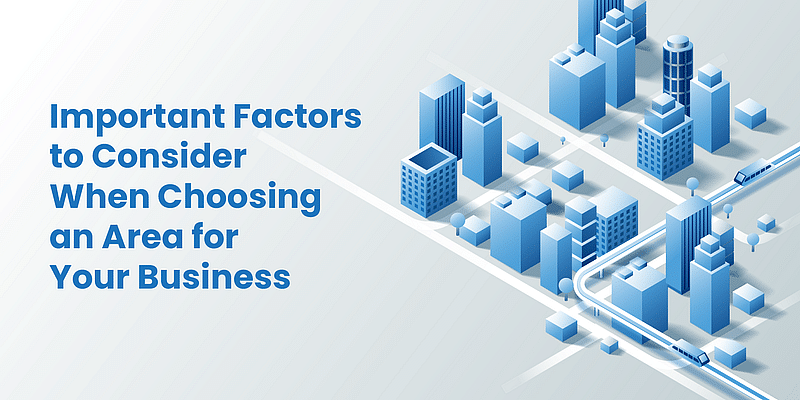In business, just as in real estate, it is all about ‘location, location, location’. Even if you sell the most power-packed product at a nominal rate, your business will tank if your customers can’t reach your place. Even though most modern entrepreneurs aren’t limited by geography these days, location is still an essential factor.
The place where your business is located can also spell doom. If your business is running in an area with burning geopolitical issues, you will feel the repercussions on your bottom line.
In this article, we look at three important business factors to consider when choosing an area for your business.
Accessibility
Where you are located can determine whether you fail or succeed in sales by a huge margin. It has a deep effect on several variables. Is it convenient for your customers to park outside your establishment? Are supplier drop-offs and pick-ups conducive? How far or close will your business be from your prospective customers? Is it difficult to get public transportation from your place?
The more accessible your business is, the more appealing it will be to your customers. They don’t want to struggle to reach your location or experience any stress.
Half of the customers’ worries disappear when they can easily find a parking stop. If businesses don’t offer that convenience, they are bound to move to a competitor who provides them with one. Parking is just one of the factors when it comes to providing accessibility.
Also, attracting the right talent makes all the difference. When forced to choose between several jobs, a good location can turn out to be a deciding factor for eligible candidates.
Accessibility is one of the most important factors to consider in business. Not providing your customers with conveniences, even minor ones, can result in losing customers. Accessibility is all about the infrastructure surrounding your establishment, including what the neighbourhood offers. It should be convenient for customers, employees, and vendors.
(Representational image)
Cost estimation
Businesses live and die by cash flow. You need to do thorough research about your overheads such as rent, utility taxes, deposits, parking charges, etc before you determine the viability of a location. If you cannot identify the utility costs, get a summary of the previous year’s usage and billing for the area. It will give you an idea of how much your expenses will be.
There could also be other costs to running a business—insurance, legal, taxes, fees, permits, administrative charges, equipment, technology, and licensing.
Be patient during this process. Due diligence in finding the costs during setup and estimating the monthly expenses going forward is pivotal before you zero in on the location. Every business is unique, and the operating costs depend on many variables. Talk to other business owners in the same area to get a clearer idea of what to expect.
It is essential to invest time and effort in getting the location right, as a few lakh rupees here and there in monthly expenses can be the difference between a lucrative business and one forced to penny-pinch.
Presence of competitors
The location of your business can be an advantage or a disadvantage. If any of your competitors are located nearby, you can also lure their customers. When the competition is too much and you can’t provide any differentiation, it might be best to find a different location.
Find out about the competitors in your area and compare both of your offerings. If you have a unique product or service that your competitors don’t provide, staying in a hypercompetitive location can do a world of good for you. It will be easy to attract customers with exciting offers.
Study the competitors in the area and see if you can do things differently to convince their customer base to choose you. It will also help if you are located in areas where different kinds of businesses thrive as you can piggyback on the customer traffic they bring. For example, if you run a 24×7 food joint in a location that has pubs, you can attract their patrons. You can even get into a partnership with complementary businesses where you can introduce each other’s customers. None of this is possible if the location doesn’t attract customers.



![Read more about the article [Funding alert] MPOWER Financing raises $100M from multiple investors](https://blog.digitalsevaa.com/wp-content/uploads/2021/07/85080f7239feebc4809b9e4a19856740eed3465e491dd8f6de1a57d885e6c67d-1625201880859-300x150.png)






![Read more about the article [Funding alert] Interior design startup Flipspaces raises $2M in pre-Series B round](https://blog.digitalsevaa.com/wp-content/uploads/2021/09/Flipspaces-Team-1593499320756-300x150.jpg)